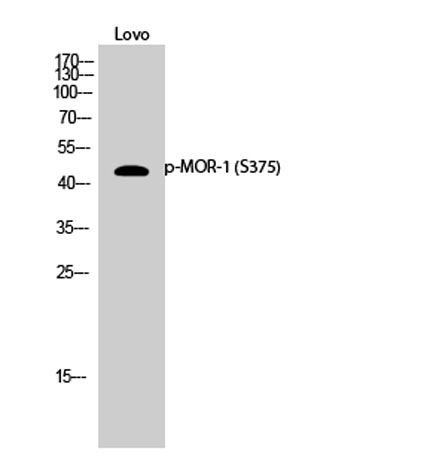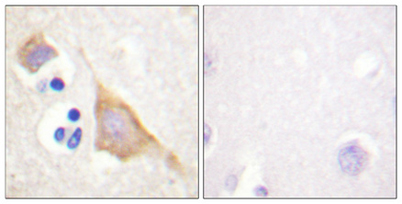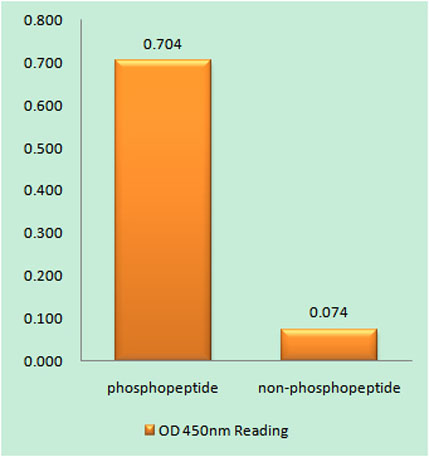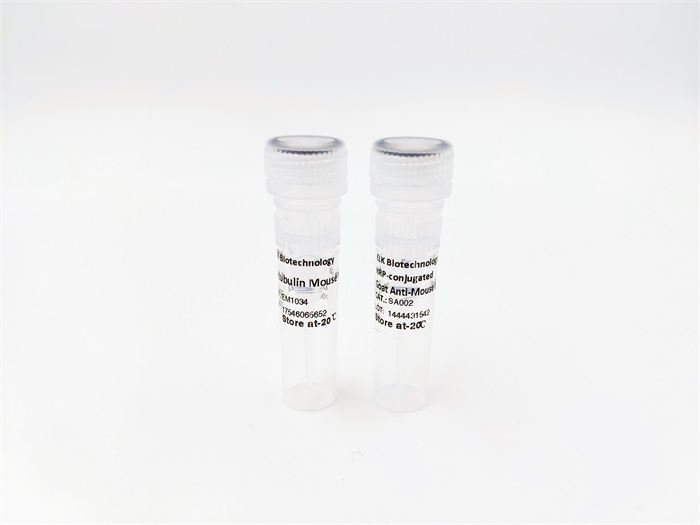



Overview
-
 Western Blot analysis of various cells using Phospho-MOR-1 (S375) Polyclonal Antibody
Western Blot analysis of various cells using Phospho-MOR-1 (S375) Polyclonal Antibody -
 Western Blot analysis of Lovo cells using Phospho-MOR-1 (S375) Polyclonal Antibody
Western Blot analysis of Lovo cells using Phospho-MOR-1 (S375) Polyclonal Antibody -
 Immunohistochemical analysis of paraffin-embedded Human brain. Antibody was diluted at 1:100(4° overnight). High-pressure and temperature Tris-EDTA,pH8.0 was used for antigen retrieval. Negetive contrl (right) obtaned from antibody was pre-absorbed by i
Immunohistochemical analysis of paraffin-embedded Human brain. Antibody was diluted at 1:100(4° overnight). High-pressure and temperature Tris-EDTA,pH8.0 was used for antigen retrieval. Negetive contrl (right) obtaned from antibody was pre-absorbed by i -
 Enzyme-Linked Immunosorbent Assay (Phospho-ELISA) for Immunogen Phosphopeptide (Phospho-left) and Non-Phosphopeptide (Phospho-right), using Opioid Receptor (Phospho-Ser375) Antibody
Enzyme-Linked Immunosorbent Assay (Phospho-ELISA) for Immunogen Phosphopeptide (Phospho-left) and Non-Phosphopeptide (Phospho-right), using Opioid Receptor (Phospho-Ser375) Antibody
关闭
在线咨询
Online consultation
-
在线咨询
-
技术支持

关注微信公众号



 下载说明 ①
下载说明 ①


